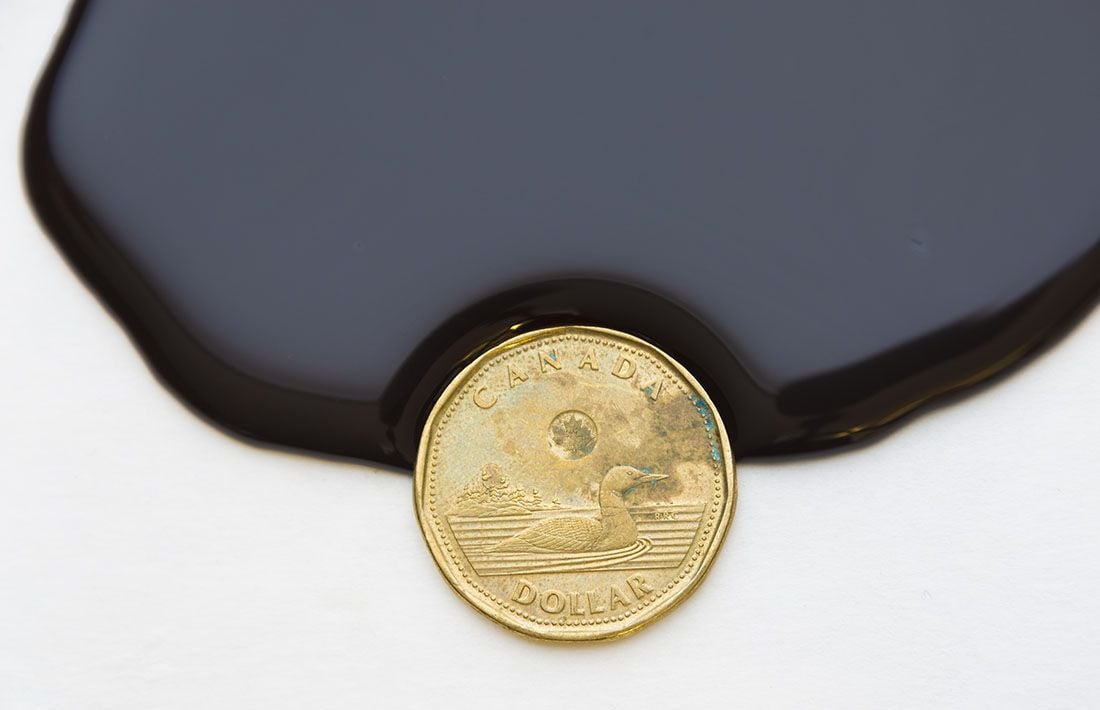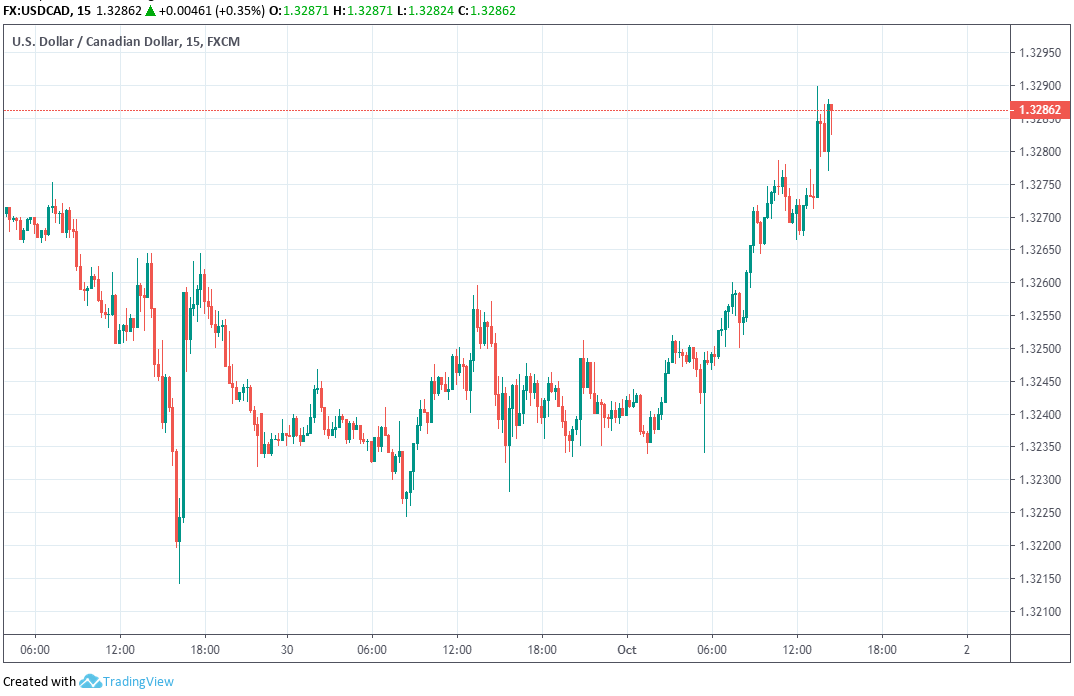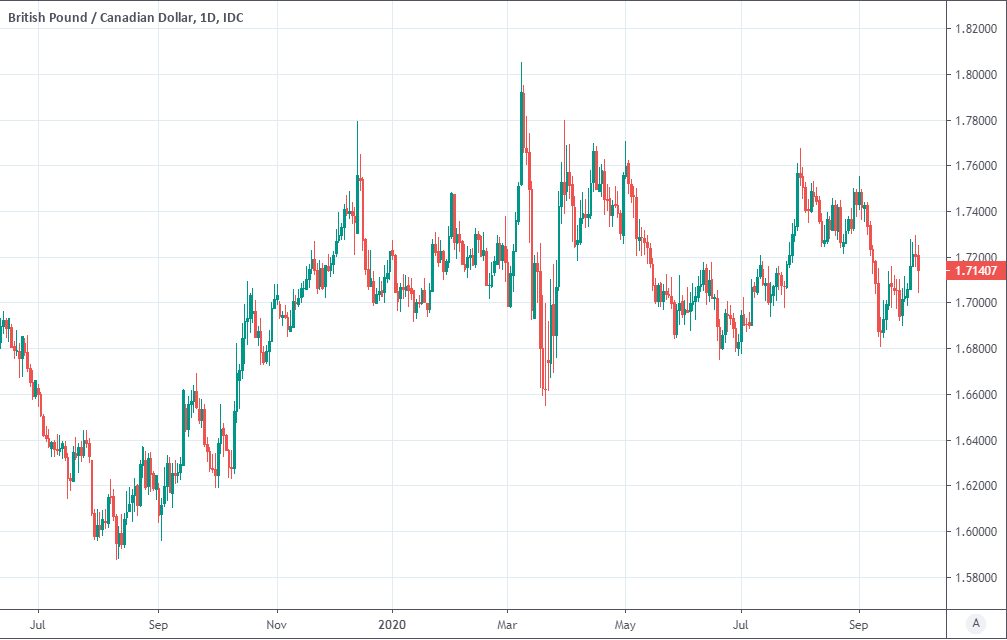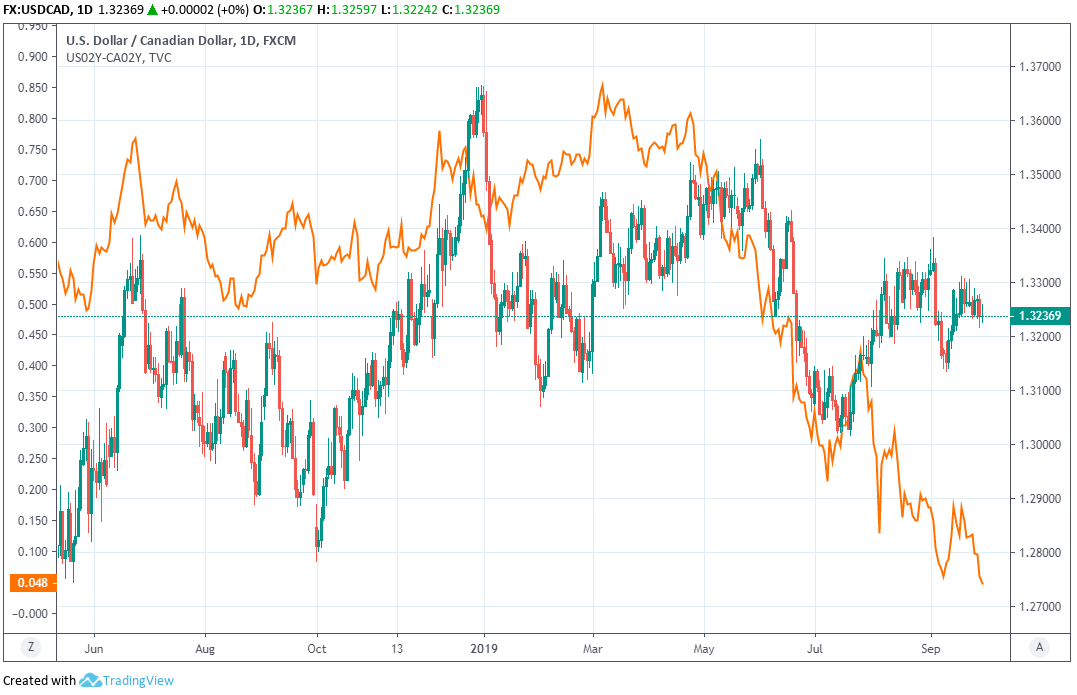Canadian Dollar at Risk after Economy Conks Out in July
- Written by: James Skinner

Image © Adobe Stock
- CAD slides after economy stalls in July, with 0% growth.
- Oil and gas sector weighs after a strong second quarter.
- But economy still on course to meet BoC forecast for Q3.
- BoC anticipated slowdown, says Q2 strength temporary.
- But numbers leave CAD vulnerable to further poor data.
The Canadian Dollar faltered Tuesday after official growth figures showed the economy stalling in July, following a strong second quarter, which could risk the Loonie's crown as the best performing major currency of 2019 in the months ahead if it portends a change in trend.
Canada's economy ground to a halt with 0% growth in July, Statistics Canada said Tuesday, when markets had been looking for a 0.1% expansion. The oil and gas sector is in the frame as the primary driver of the slowdown after output fell by 3.5% following declines across all sub sectors, with the retrenchment of activity in part the result of maintenance troubles that led to shutdowns at some offshore production facilities.
The goods producing industries were all also weak during the July month, with manufacturers seeing a second consecutive contraction and with all other sub sectors also in retreat. Services industries mostly saw output rise in July, which helped offset much of the downturn in the production sector and spared the broader economy from contraction. Nonetheless, the figures mark a soft start to the third quarter for Canada's economy.
"With the first month of Q3 undershooting expectations, third quarter tracking forecasts for growth will fall closer to the 1 1/2% that the Bank of Canada had penciled into the July MPR. The disappointment will be bullish for fixed income and bearish for the loonie," says Royce Mendes at CIBC Capital Markets.

Above: USD/CAD rate shown at 15-minute intervals.
Currency markets care about the GDP data because it reflects rising and falling demand within the economy, which has a direct bearing on consumer price inflation, which is itself important for questions around interest rates. And interest rates themselves are a raison d'être for most moves in exchange rates.
Changes in interest rates are normally only made in response to movements in inflation, which is sensitive to growth, but impact currencies because of the push and pull influence they have over capital flows. Capital flows tend to move in the direction of the most advantageous or improving returns, with a threat of lower rates normally seeing investors driven out of and deterred away from a currency while rising rates have the opposite effect.
"Knee-jerk CAD weakness should eventually be faded as the BOC is not in a rush to cut soon. The CAD should remain a better performer against the low yielders like the EUR. There's little impetus for USDCAD to be shaken out of its 1.3150/3350 range," says Mazen Issa, a strategist at TD Securities.
Canada's economy outperformed in the second quarter as an oil sector recovery coincided with a pickup in exports, enabling the economy to grow at an annualised pace of 3.7% during the period, its fastest in years.

Above: Pound-to-Canadian-Dollar rate shown at daily intervals.
The Bank of Canada (BoC) said second quarter strength was temporary and forecast a modest slowdown in the final half of the year, which is important because it's the pace of growth up ahead that will dictate the BoC's stance as well as the Loonie's relative performance.
The BoC cash rate of 1.75% has ensured the Canadian Dollar remains a draw for yield hungry investors, helping to keep the Loonie at the top of the major currency league table, but analysts are increasingly questioning how much longer that can continue. Much of the recent outperformance was, after all, the result of export activity that's now under threat from the escalating U.S.-China trade war and a slowing global economy.
"The Canadian economy’s best growth streak since 2017 came to an end in July," says Josh Nye at RBC Capital Markets. "Today’s data are consistent with the BoC’s view that growth over the second half of the year is likely to be slightly slower than the first half. But again, there are few signs of a broader slowdown in today’s data. That gives the central bank time to be patient in assessing whether a bit more accommodation is needed to offset external headwinds."

Above: USD/CAD rate shown at daily intervals alongside US-CA 'rate spread'.
"The market is pricing a magnitude of relative Fed-BoC policy rate easing justifiable only with WTI at $80/bbl in a benign external environment. Our internal forecasts for the Fed and BoC point to only modest USD/CAD upside as the exchange rate has (correctly, in our view) already decoupled from rate differentials," says Ben Randol at Bank of America.
Randol forecasts the USD/CAD rate will rise to 1.35 by year-end as the international environment sours amid a continued U.S.-China trade war and as investors give commodity-linked assets like the Loonie a cooler reception. The the Pound-to-Canadian-Dollar rate is tipped to rise from 1.62 to 1.79 although that forecast has more to do with the bank's Brexit view than it does any anticipated weakness in Canadian exchange rates.
CIBC tips the USD/CAD rate to end 2019 at 1.33 but is forecasting an increase to 1.38 over the course of 2020. It also says the Bank of Canada and an anticipated rate cut around the New Year will be instrumental in bringing about that depreciation. But CIBC sees the Pound-to-Canadian Dollar rate down at 1.59 by year-end, from 1.62 Tuesday, although this forecast is also more the result of the bank's Brexit view than it is Canadian economic factors.
Time to move your money? Get 3-5% more currency than your bank would offer by using the services of foreign exchange specialists at RationalFX. A specialist broker can deliver you an exchange rate closer to the real market rate, thereby saving you substantial quantities of currency. Find out more here.
* Advertisement




